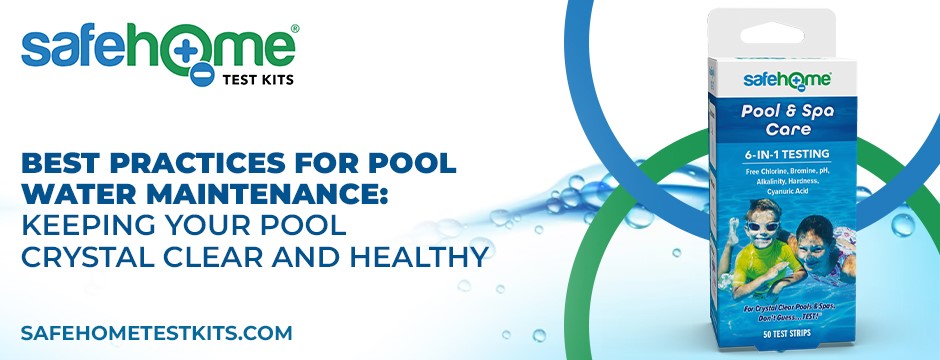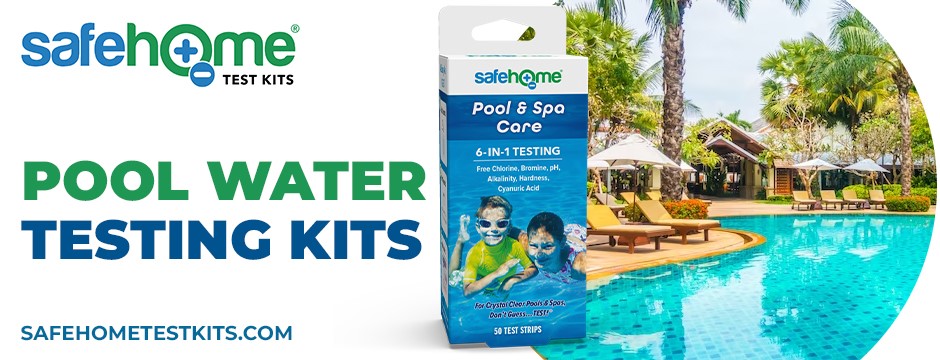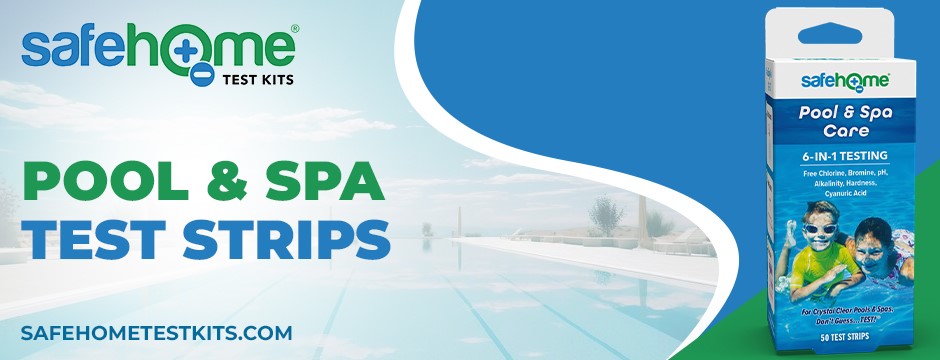Best Practices for Pool Water Maintenance: Keeping Your Pool Crystal Clear and Healthy

Summertime means fun in the sun and cooling off in the pool. But to fully enjoy your pool, it’s crucial to keep its water crystal clear and healthy. Proper pool water maintenance not only ensures a safe swimming environment but also extends the life of your pool equipment and enhances your overall pool experience. This comprehensive guide delves into the best practices for maintaining your pool’s water quality so you can enjoy a sparkling oasis all season.
Understanding Pool Water Chemistry
Let’s start with the basics: pool water chemistry. It’s essential to comprehend the fundamentals of maintaining your pool properly. The key components to monitor are pH levels, chlorine, and alkalinity.
1. pH Levels
pH measures the acidity or alkalinity of your pool water on a scale from 0 to 14, with 7 being neutral. For a pool, you should aim for a pH between 7.2 and 7.8. Maintaining the correct pH is crucial because:
- It affects the effectiveness of chlorine.
- It prevents corrosion or scaling of pool equipment.
- It ensures swimmer comfort and prevents eye and skin irritation.
Best Practice: Regularly test your pool’s pH levels using a reliable testing kit. Adjust pH levels as needed by adding a pH increaser (to raise pH) or pH reducer (to lower pH).
2. Chlorine and Sanitation
Chlorine is your pool’s primary defense against bacteria and algae. There are two common forms of chlorine for pool use: liquid chlorine and chlorine tablets (trichlor or dichlor). Proper chlorine levels are essential because:
- Chlorine disinfects the water and kills harmful microorganisms.
- It prevents the growth of algae.
- It helps maintain water clarity.
Best Practice: Regularly test and maintain chlorine levels within the recommended range (usually 1-3 ppm). Shock your pool with a chlorine shock treatment weekly or after heavy use to eliminate contaminants.
3. Alkalinity and Total Hardness
Alkalinity refers to the water’s ability to resist pH changes. Total hardness measures the concentration of minerals in the water. Maintaining proper alkalinity (typically 80-120 ppm) and total hardness (around 200-400 ppm) levels is essential because:
- Proper alkalinity stabilizes pH levels.
- Total hardness prevents water from becoming too soft or too hard, which can cause equipment damage.
Best Practice: Test and adjust alkalinity and hardness levels as needed. Baking soda can increase alkalinity, while calcium hardness increaser is used for total hardness.
Regular Testing and Monitoring
Now that you understand the key components of pool water chemistry, the next best practice is regular testing and monitoring. Test your pool water at least once weekly and more frequently during hot summer or after heavy pool usage. Use a reliable testing kit to measure pH, chlorine levels, alkalinity, and total hardness. Keep a log of your test results to track trends and make necessary adjustments.
Balancing pH Levels
Maintaining proper pH levels is vital for water quality and swimmer comfort. When the pH is too low (acidic), it can corrode pool equipment and cause skin and eye irritation. When it’s too high (alkaline), it reduces the effectiveness of chlorine and can cause scaling on pool surfaces.
Best Practice: Adjust pH levels using a pH increaser or reducer, following the manufacturer’s instructions. Aim for a pH level of 7.2 to 7.8.
Chlorine and Sanitation
Chlorine is your pool’s primary defense against bacteria and algae. Proper chlorine levels are essential to ensure the safety and cleanliness of your pool water.
Best Practice: Maintain chlorine levels within the recommended range (usually 1-3 ppm). Shock your pool weekly to eliminate contaminants and maintain chlorine efficacy.
Alkalinity and Total Hardness
Balancing alkalinity and total hardness stabilizes water chemistry and prevents equipment damage.
Best Practice: Test and adjust alkalinity and total hardness levels as needed. Use baking soda to increase alkalinity and calcium hardness increaser for total hardness.
Filtration and Circulation Systems
A well-functioning filtration and circulation system is the heart of your pool’s water maintenance. Here’s why it matters:
- Filtration: The filtration system removes debris, dirt, and impurities from the water, helping to keep it clean and clear.
- Circulation: Proper circulation ensures that pool water is evenly distributed and effectively passes through the filtration system.
- Best Practice: Run your pool pump and filter for an adequate duration each day (typically 8-12 hours), especially during peak swimming times. Regularly clean or backwash your pool filter to maintain its efficiency.
Cleaning and Skimming
Regular pool cleaning is essential to prevent debris buildup and maintain water clarity. Skimming the pool’s surface with a net and vacuuming the pool floor and walls are vital tasks.
Best Practice: Establish a routine for skimming and vacuuming your pool. Remove leaves, bugs, and other debris from the surface regularly to prevent them from sinking and decomposing on the pool floor.
Preventing Algae and Contaminants
Algae growth and contaminants can quickly turn your pool water from clear to cloudy or green. Prevention is the key:
- Algae: Algae can thrive in unbalanced water with inadequate sanitizer levels. Regularly shock your pool to prevent algae growth.
- Contaminants: Maintain proper water chemistry and circulation to minimize the risk of contaminants entering the pool.
- Best Practice: Use algaecides and pool shock treatments as preventative measures, especially during hot weather or after heavy rain.
Winterizing Your Pool
If you live in a colder climate, winterizing your pool is essential to protect it from freezing temperatures.
Best Practice: Follow a comprehensive winterization checklist that includes draining water, protecting pool equipment, and using a winter cover.

Pool Water Testing and Maintenance Tools
Invest in reliable testing and maintenance tools to simplify your pool water care routine. These tools can include:
- Pool Water Testing Kits: Pool water testing kits provide accurate and easy-to-read results.
- Automatic pool cleaners: Help with regular pool floor and wall cleaning.
- Chemical dispensers: Ensure even chemical distribution.
- Pool covers: Protect your pool from debris when not in use.
Troubleshooting Common Pool Water Issues
Despite your best efforts, pool water issues may still arise. Here are some common problems and their solutions:
- Cloudy water: Shock the pool, clean the filter, and balance the water chemistry.
- Green water: Treat with algaecide, shock, and vacuum.
- Foamy water: Adjust pH and alkalinity levels and ensure proper circulation.
- Metallic stains: Use a metal sequestrant to prevent metal buildup.

Safe Home's Contribution to Pool Water Maintenance
Safe Home® offers a practical solution for maintaining crystal-clear and healthy pool water. Their user-friendly DIY test strips simplify water testing, ensuring swift and precise results with a single dip. These strips detect various water imbalances, allowing you to take quick corrective action. Regular testing, at least twice weekly, is recommended for optimal results. However, it’s important to note that Safe Home’s test strips are not suitable for saltwater pools or spas. Each kit provides 50 tests, ensuring you’re well-equipped for ongoing pool water monitoring. Incorporating Safe Home’s pool & spa test strips empowers you to proactively maintain your pool’s pristine condition, enhancing your swimming experience.
Conclusion
Maintaining clear and healthy pool water requires diligence, but the rewards are worth the effort. You can enjoy a sparkling pool all summer by understanding pool water chemistry, regularly testing and adjusting chemical levels, and following best practices for filtration, cleaning, and prevention. Remember that each pool is unique, so adapting these best practices to your specific pool’s needs is essential. With proper care, your pool will provide a refreshing and enjoyable oasis for years.


